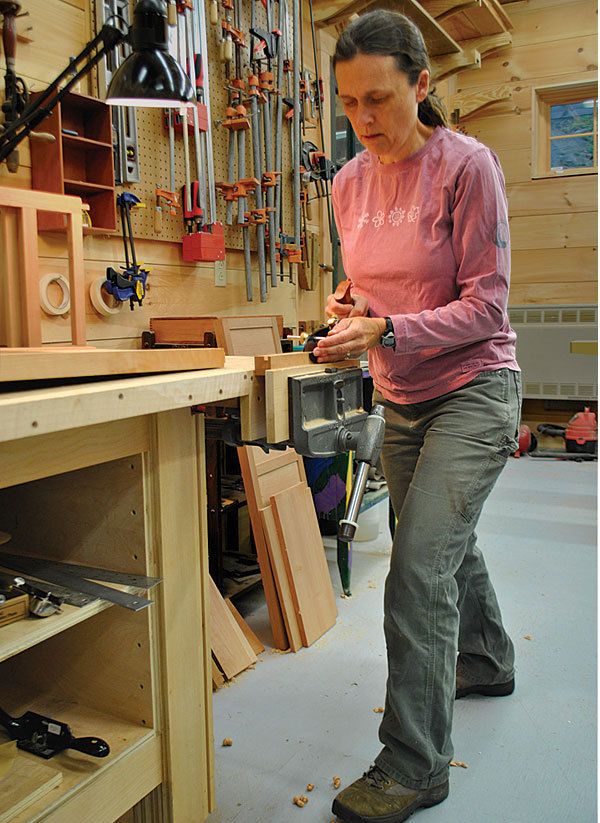
Synopsis: If you dream of making furniture but are not sure where to begin, take some advice from Monica Raymond. She set out to learn woodworking after she built herself a house, so she has no shortage of gumption. Here she lists some practical advise for those who’d like to follow in her footsteps.
In 1985, I announced to friends and family that I was dropping out of college to build a house. I was surprised when several people asked, “What makes you think you can build a house?” It had never occurred to me that I couldn’t. My reply was, “People build houses. I’m a person; therefore I can build a house.”
Completing that house took many years and plenty of blood, sweat, and tears, but is my proudest accomplishment. And now that experience is bearing fruit as I pursue another passion: making furniture.
If you dream of building furniture but don’t know where to begin, or if you are not progressing as fast as you’d like, read on. I won’t tell you how to make furniture, but I do have some advice about how to learn. I’ve already shared Lesson No. 1: Believe in yourself.
Lesson 2: Take a class
I thought that my carpentry skills qualified me to build furniture, and so I made a few tables and cabinets over the years, but nothing ever came out very well. I was about to give up entirely when I wondered if my feeble skill level was due to a lack of training rather than some personal defect. A few months later, I took a two-week basic fine woodworking class and my skills took a quantum leap.
Don’t struggle for years like I did before taking a class! Woodworking books are very useful, but if a picture is worth a thousand words, seeing a live woodworking demonstration is worth a million. And when the demo is followed by hands-on practice and feedback, it’s priceless. In a class, you learn specific techniques for every part of the furniture making process. If at first you don’t succeed, the instructor can diagnose and correct your mistakes. Even when you make a blunder that seems irreparable, the teacher usually knows a way to fix it.
The technique I was most excited to learn in my first class was dovetails. So, my first project after the course was a blanket chest with 40 hand-cut dovetails. I now knew that starting with perfectly flat boards was essential, but there were still some gaps in my knowledge. While I had learned how to flatten and square a single board, my jointing skills were not great and my handplaning skills (actually, my sharpening skills) were poor. I got around this by using a friend’s drum sander to flatten the wide glueups. But unlike my first woodworking experiences, which left me frustrated and demoralized, these failures simply motivated me to enhance my skills. Having attended a class made me realize that I could improve, and I knew how to make it happen.
From Fine Woodworking #217
For the full article, download the PDF below:
Fine Woodworking Recommended Products

Starrett 12-in. combination square

Bessey EKH Trigger Clamps

Dubuque Clamp Works Bar Clamps - 4 pack





















Log in or create an account to post a comment.
Sign up Log in